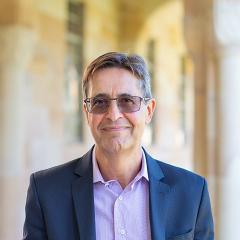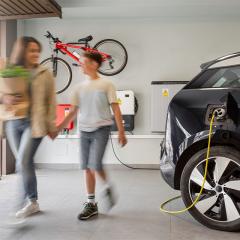The AIBE Explainer series provides a breakdown of some of the key economic issues facing Australians today. This explainer has been written by our Director Professor Flavio Menezes, AIBE’s Westpac Fellow Dr Andrea La Nauze and HDR Scholar Thara Philip.
Electric vehicles (EVs) are crucial for Australia's road transport sector to reach a net-zero emissions goal by 2050. In our previous Explainer, we discussed EVs and compared the expenses of charging them to traditional fuelling methods. In this second instalment of our EV Explainer series, we will delve into how EVs can actively contribute to the transition of the electricity grid towards renewable energy sources.
As the number of EVs increase, the demand for electricity to power these vehicles also increases. Globally, EVs could require between 525 TWh and 860 TWh of electricity in 2030, up from 80 TWh in 2020. The impact of EVs on the electricity sector goes beyond the increase in demand, as it will also affect the electricity load curve – the amount of electricity demanded throughout the day. This is important because when and how EVs are charged will determine their overall impact in reducing greenhouse gas emissions. It will also determine their impact on the grid itself: the ability to optimise the power grid operation control, undertake network planning, and ensure grid reliability. For example, an EV user who charges during the evening peak will contribute to an increase in emissions compared to charging outside of peak hours. This is because the extra load will likely be met by fossil fuel generators, and if many EV drivers follow this trend, it may lead to costly network expansion. Similarly, unpredictable EV charging patterns will make it more difficult to plan network expansion, raising the cost of the energy transition.
Below, we explore what individual EV owners can do to assist with the energy transition in a way that is cost-effective for them.

When is the best time to charge my EV from a financial viewpoint?
A general rule of thumb is to charge outside of the evening peak hours or high-energy use times, which are typically from 4pm to 8pm. Charging off-peak can lead to cost savings and also assist in reducing peak demand by avoiding costly network expansion and additional investment in generation to meet peak demand, currently mostly met by fossil fuel generators. Wholesale electricity costs have traditionally been low at night to reflect the fact that it is costly for coal-fired power stations to adjust their electricity production. Coal-fired power stations are referred to as baseload generators for this reason, and their bids tend to be low during periods of low demand to ensure that they are dispatched by the market operator. The market operator orders bids from lowest to highest, dispatching all generators that bid below the price at which the amount bid equals demand. Of course, the increased penetration of renewables has reduced the need for baseload generation.
Many retailers offer Time-of-Use (ToU) tariffs that establish varying electricity rates according to the time of day. Currently, these rates are typically low overnight due to lower levels of demand and wholesale costs during these hours of the day. Capitalising on these lower tariffs, EV users can charge their vehicles at home during periods of reduced electricity demand, ensuring cheaper EV charging. For those without rooftop solar and who charge their EV at home, charging at reduced ToU rates is usually the lowest cost method. ToU tariffs are also applicable at many public charging stations.
For those with rooftop solar, or rooftop solar and battery systems, charging using electricity generated from their rooftop solar that would otherwise be exported to the grid will usually be the lowest cost method. The feed-in tariffs paid by retailers for electricity exported to the grid are typically much smaller than the tariffs charged for consumption from the grid.
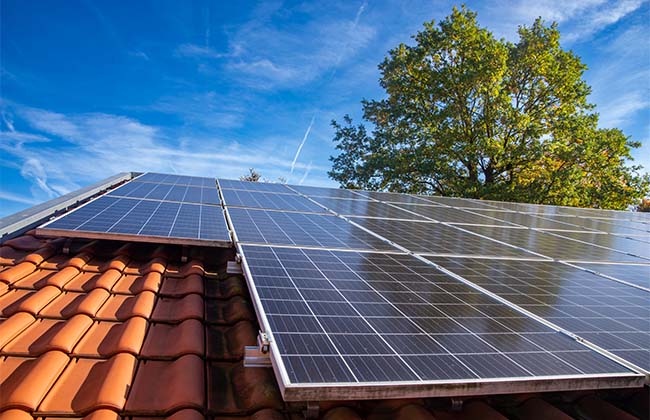
When is the best time to charge my EV from an environmental viewpoint?
The environmental impacts of charging at different times of day are more nuanced. EVs produce zero tailpipe emissions, and greenhouse gas emissions produced by driving EVs are also zero if they are powered by renewable energy. An EV charged through renewable sources like solar and wind boasts a greener footprint compared to one relying on coal or gas generation.
So, are EVs in Australia powered by renewable energy? The emissions impact of electricity use depends on where the additional electricity comes from. This is called marginal generation. At the moment, any increase in electricity demand is usually met by additional coal or gas generation, but increasingly, during the middle of the day, it will be solar. Why is that? In part, it is thanks to Australia's high rate of rooftop solar penetration, with more than one-third of households adopting rooftop solar. Solar power generation peaks during the day, typically from 10am to 4pm, depending on the region and weather conditions. This substantive increase in rooftop solar has reduced the demand for electricity from the grid in the middle of the day in what historically was the peak period. This is called the duck curve, which shows over time the change in the electricity load curve throughout the day for a particular day.
When additional electricity use comes from live or stored solar and wind power, EV charging is emissions free. EVs that are charged in the middle of the day therefore tend to support the transition to a renewable grid. Importantly, as the penetration of renewables increases, financial and environmental considerations will converge. Cheaper charging options are already becoming available during daytime hours, with some retailers currently offering cheaper rates during the middle of the day. Soaking up this abundant electricity by charging during the middle of the day will therefore be cheaper, lower the stress on the grid, and have positive environmental impacts. The increase in the uptake of home and community batteries will allow the benefits of rooftop solar EV charging to extend beyond daytime hours and to be shared with others who can’t install rooftop solar.
Some employers and organisations are also setting up charging stations that are fully powered by renewable energy. For example, as part of UQ's commitment to sustainable transport, EV charging stations have been installed for use by the UQ community. UQ’s infrastructure includes the 64-megawatt Warwick Solar Farm that is powering UQ to 100 per cent renewable.
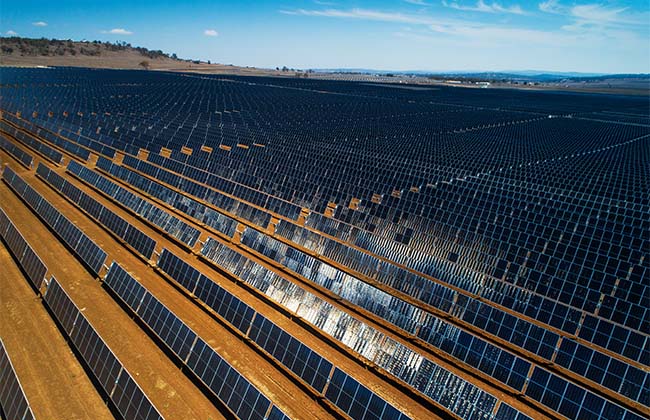
How can I optimise charging my EV?
Most EVs come with programmable charging settings that allow users to schedule their charging times. This means that EV users can plug in their vehicles at their convenience, and the EV would draw power from the grid only during the scheduled time. EV owners can aim to maximise their benefit from lower electricity rates and reduced environmental impacts through prudent use of this technology.
Third-party smartphone applications are available to help EV owners schedule and automate their charging. These apps consider factors like electricity rates, renewable energy availability, and optimal charging times. For instance, the smart charging app ChargeHQ allows you to monitor your rooftop solar production and automate EV charging accordingly.
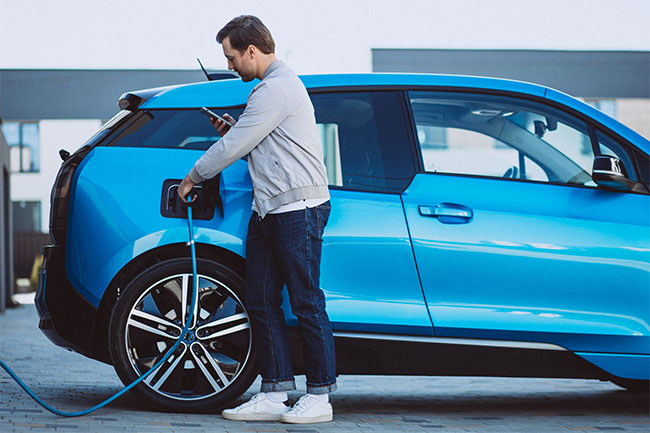
What is the future of EV charging?
Australia's EV charging future is on the brink of innovation, poised for a dynamic transformation through the introduction of smart charging technology. This technology encompasses both managed charging (V1G) and Vehicle-to-Grid (V2G), promising a step change in our charging infrastructure.
Managed charging (V1G)
Managed charging, often referred to as V1G technology, enables EVs to intelligently adjust their charging rates and schedules in response to grid demand and the availability of renewable energy sources. In Australia, various initiatives are actively working to establish managed charging programs aimed at optimising energy consumption and alleviating grid strain during peak usage times. Two notable examples include the AGL EV smart charging trial and the Endeavour Smart EV Charger plan, both of which are presently accessible for EV owners to enrol in.
Vehicle-to-Grid (V2G)
V2G technology empowers EVs to feed surplus energy back to the grid. This capability takes on increased significance when considering the duck curve we discussed earlier. By choosing to charge during daylight hours, EVs can actively assist the grid in managing demand, thereby enhancing its overall performance and stability.
Crucially, when vehicle-to-grid functionality is activated, capable EVs can export surplus energy stored in their batteries back into the grid during peak usage times. Looking ahead, it's projected that the National Energy Market will require a substantial 640 gigawatt-hours (GWh) of energy storage by 2050 to transition to renewable energy sources effectively. Remarkably, EV batteries are expected to offer about four times the necessary capacity. By harnessing even a fraction of this potential through technologies like V2G, there exists a significant opportunity for substantial savings, potentially saving billions of dollars on large-scale battery and network infrastructure expenses.

In conclusion, smart charging holds great promise for propelling the growth of Australia's sustainable transportation and energy infrastructure through increased EV adoption. However, as explained above, the choice to charge during daylight hours using renewable sources presents a key opportunity for EV owners today to actively contribute to the cost-effective transition to a net-zero emissions future.
AIBE Explainer Series
The AIBE Explainer series provides a breakdown of some of the key economic issues facing Australians today. This explainer has been written by our Director Professor Flavio Menezes, AIBE’s Westpac Fellow Dr Andrea La Nauze and HDR Scholar Thara Philip.
The pathway to net-zero emissions by 2050 is clear. It starts with the decarbonisation of the electricity sector. It then moves to the electrification of the transportation fleet. Finally, it requires thinking about difficult-to-abate sectors, including heavy industry, aviation, and materials.
In our last Explainer, we focused on green hydrogen and the role it may play as a fossil fuel substitute in the difficult-to-abate sectors. In this Explainer we turn to electric vehicles (EVs) and how they can assist to decarbonise our energy system.

What is an Electric Vehicle?
EVs are vehicles that are powered by electric motors instead of internal combustion engines. When charged using renewable energy sources like solar or wind power, EVs emit no greenhouse gases. Beyond their environmental benefits, EVs also offer potential advantages such as reduced air and noise pollution, improved energy security due to their ability to act as mobile batteries, and lower vehicle operating costs.
What are the different types of electric vehicles
There are four different types of EVs:
- Battery electric vehicles (BEVs): These are fully electric and use an external charging outlet to charge the battery.
- Plug-in hybrid electric vehicles (PHEVs): These can be charged with electricity using a plug but also contain an internal combustion engine that uses liquid fuel.
- Hybrid electric vehicles (HEV): These are powered by a combination of electricity and liquid fuel. Unlike PHEVs, they do not use an external plug to charge the vehicle. Electricity is produced only through regenerative braking, which converts kinetic energy during the process of slowing down a vehicle back into electricity.
- Fuel Cell Electric vehicles (FCEV): They use ‘fuel cell’ instead of, or in combination with, a battery- to generate the electricity required to run the vehicle. These are typically fuelled by hydrogen. The uptake of FCEVs is currently limited.
Table 1 below provides a summary of the different types of vehicles. The main feature to note is that when powered fully by renewable electricity, BEVs emit the least GHG emissions compared to all other technologies.
Table 1: Types of electric vehicles
| Battery Electric Vehicle | Plug-in Hybrid Electric Vehicle | Hybrid Electric Vehicle | Fuel Cell Electric Vehicle | |
|---|---|---|---|---|
| Acronym | BEV | PHEV | HEV | FCEV |
| Power train (the set of components that generate the power required to move the vehicle) | Electric | Electric + Combustion | Electric + Combustion | Electric + Electrochemical |
| Plug-in | Yes | Yes | No | No |
| Top-up | Electricity | Fuel and electricity | Fuel only | Hydrogen |
| Regenerative braking | Yes | Yes | Yes | Yes |
How do you charge an electric car?
An EV can be charged at your residence, workplace, or other public charging stations. There are nearly 5000 public chargers spread across 2,392 locations in Australia and the number is expected to grow in the coming years. The figure below displays the different methods that can be used to charge an EV.
Figure 1: Methods of charging an electric vehicle
| Level / Mode | Charge Type | Which EV's |
|---|---|---|
| Level 1 Mode 2 | AC trickle charge uses a standard 220 V regular plug. This adds between 10 and 20 km of range per hour and is the slowest method of charging your EV. It could take between 25 and 45 hours to fully charge your BEV. | PHEV BEV |
| ||
| Level 2 Mode 3 | AC fast charge uses a dedicated EV charger up to 22 kW. This adds between 40 to 100 km range per hour. Setting up a dedicated AC fast charger (also called a wall-box) typically costs $1000-$2000 + installation by an electrician. | PHEV BEV |
| ||
| Level 3 Mode 4 | DC fast and ultra-fast charge is the fastest way to charge. Power levels of these chargers vary from 25 kW to 150 kW (fast chargers) or up to 350 kW (ultra-fast chargers). Ultra-fast charging can add about 400 km range within 15 minutes but is currently only supported by a few BEVs in the market. | BEV |
| ||
The time taken to charge your EV depends on the battery capacity of your EV, the type of charger and other factors such as battery level remaining and temperature.
The higher the battery capacity (kWh) of the EV, the more electricity it can store and the longer it takes to fully charge. This means a Tesla Model Y with a 60 kWh battery would take longer than a Nissan LEAF with a 40 kWh battery to fully charge when connected to the same type of charger.
The lower the power output (kW) of the charger, the longer it takes to charge. For instance, an EV would take less time to fully charge when connected to a 22 kW AC fast charger as opposed to a 7 kW AC charger.
What is the cost of owning an Electric Vehicle?
The price of electric car models available in Australia varies from about $45,000 to $346,000. However, as of February 2023 waiting lists at many Australian dealers have no predicted delivery dates for EVs.
EVs are currently higher priced compared to their conventional counterparts. This can be attributed to high battery costs and low volume of production. With improving technology and increasing economies of scale, electric vehicles are expected to achieve purchase price parity with conventional vehicles in the mid-late 2020s in Australia.
When talking about the costs of owning a vehicle - electric or not - operational and maintenance costs are also important.
How much does it cost to charge an electric car?
The total cost of charging your EV can be estimated by multiplying energy consumed (kWh) and tariff rate. A tariff is a price you are charged for the energy used. Electricity rates could be different in different regions and may vary depending on where and when you charge. The table below shows the costs of charging an EV for different charge locations:
Table 2: Cost to charge an electric vehicle
| Location of charging | Home | AC public fast chargers | DC public fast chargers |
|---|---|---|---|
| Factors determining charging costs | Electricity tariff rates, location, time of day | Location, type of provider | Location, provider, type of charging (fast vs ultra-fast), time of day |
| Costs | About 8 to 35 cents per kWh | These are found at shopping centres, hotels, and some workplaces, and are usually free for guests to use. However, parking fees or time limits may apply at some locations. | About 40c/kWh for fast chargers, and 60c/kWh for ultra-fast chargers. Some EV users have access to free fast charging. For example, some Telsa users have free access to Tesla supercharging network. |
How does the cost of charging an EV compare to the cost of fuelling a conventional vehicle?
To understand this better, we compare one of the cheapest EVs available in Australia – the MG ZS EV - and its fuel-powered equivalent MG ZST. MG ZST has a fuel economy of 7.1 L per 100 km whereas MG ZS EV is rated at 17.1 kWh/ 100 km.
Let’s consider an average Australian based in Brisbane who drives about 35 kilometres per day.
As of April 2023, the cost of regular unleaded fuel is 201 cents per litre. For the purpose of estimating charging costs, two prevalent rates provided by Origin Energy’s residential electricity plan are used: A flat rate of 25.82 cents/ kWh, and time-of-use off-peak of 20.32 cents/kWh.
Figure 2: Comparison of costs of charging an EV vs fuelling an equivalent conventional vehicle
| Vehicle and mode of refill | Running cost/year | Saving of EV charging compared to fuelling ICEV |
|---|---|---|
| MG ZST (Regular unleaded) | $1768 | Not applicable |
| MG ZS EV (Flat-rate tariff) | $421 | $1347 |
| MG ZS EV (Time-of-Use tariff) | $547 | $1221 |
| MG ZS EV (Fast charging) | $843 | $925 |
An EV owner who relies solely on electricity generated from their rooftop solar wouldn’t be spending any money to power their vehicles, but instead will receive less revenue from exporting their excess solar to the grid. EVs also have 40% lower maintenance costs than equivalent internal combustion engine vehicles.
We have explained what is an EV, how it is charged, and how much it costs to own an EV. In the second part of this AIBE Explainer, we will explore how the charging behaviour of EV owners will be crucial to achieving net zero emissions by 2050, a topic that is also the subject of ongoing AIBE research.
Ongoing research by AIBE seeks to uncover the most effective incentives to encourage EV owners to charge their vehicles at the most opportune times.





